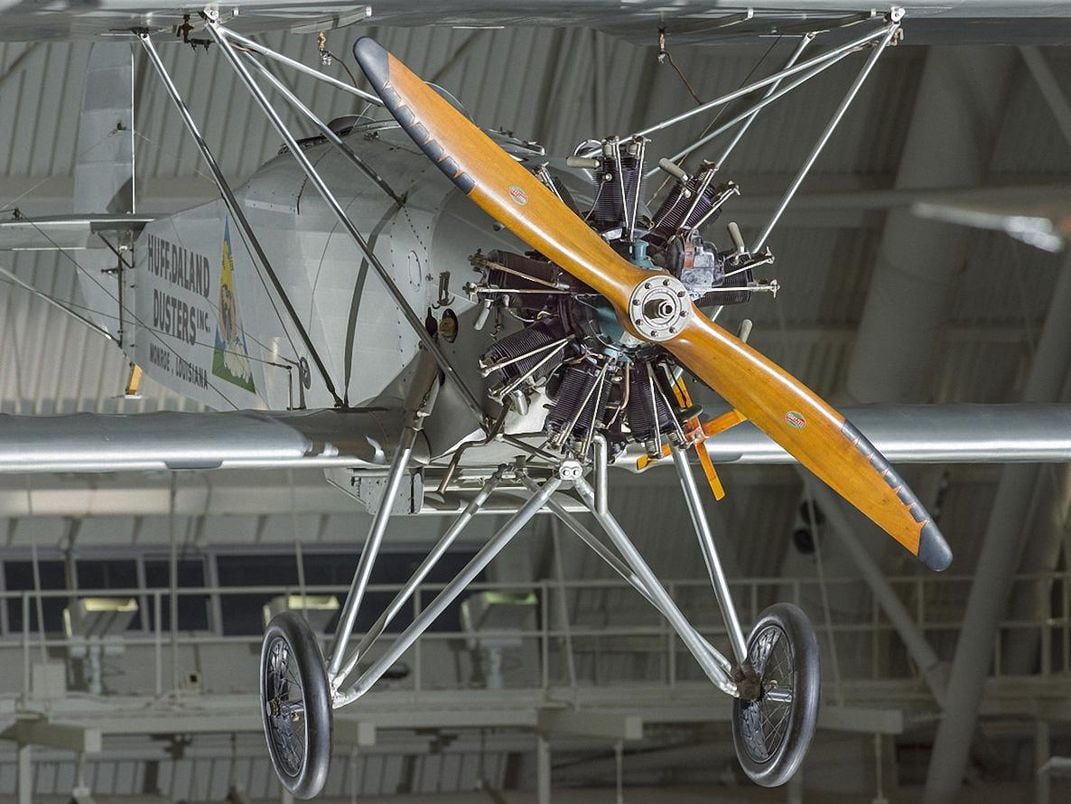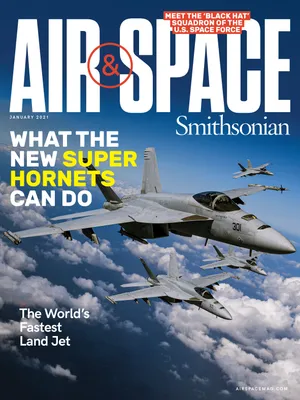America by Air: A New Gallery Takes Shape
The National Air and Space Museum exhibit tells the epic story of air travel.
/https://tf-cmsv2-smithsonianmag-media.s3.amazonaws.com/filer/eb/3f/eb3f4635-0e4f-4e8f-ad26-f7e114aa23a2/13v_dj2021_247d_nopshopsi-2007-16002_live.jpg)
In the autumn of 2007, the National Air and Space Museum opened a new exhibition highlighting the remarkable history of the airline industry in the United States. Quickly, America by Air became one of the Museum’s most popular exhibits, with its walk-through Boeing 747 nose, novel interactive features, and compelling story. These popular elements will reappear in the new and dramatically enhanced America by Air, which will open in 2022. As part of the Smithsonian Institution’s ambitious multi-year project to revitalize the aging 44-year-old building on the National Mall, the National Air and Space Museum is undertaking a massive project to transform every hall and gallery with new, innovative exhibits using the latest techniques in design and presentation. This is a rare opportunity to update and create a completely new Museum, inside and out. The centerpiece of the first phase of the Museum’s transformation project is the new America by Air.
The exhibition tells the story of the development of the U.S. airline industry from its conception in 1914 to the present day. Central to the story are the relationships among business, government, and the traveling public, and how these relationships have evolved through the application of numerous technologies in aeronautics, propulsion, communications, and navigation.
As with many industries and technologies that are important in the daily life of citizens, air travel has sometimes been taken for granted—its origins are not understood. Most citizens have no idea that America’s airline industry started with cautious airmail flights between Washington, D.C. and New York City in 1918. Earlier attempts to carry passengers came and went before the U.S. Post Office made air travel possible by creating the routes, developing the infrastructure, and paying for the industry through contracts and subsidies. By the late 1920s, these routes were turned over to commercial airmail carriers—which became today’s airlines—and grew into an indispensable industry.
/https://tf-cmsv2-smithsonianmag-media.s3.amazonaws.com/filer/83/15/83158535-9b88-450c-8967-3be250354ecd/13e_dj2021_easternkoda_nasm-9a05080_live.jpg)
Key to the expansion of the airlines into a mature industry by the 1940s and on into today were the pioneering individuals who seized the opportunities offered to carry airmail. The new America by Air will tell the stories of these visionaries as well as the thousands of dedicated airline employees who worked to make their visions a reality. Throughout the gallery, visitors will find artifacts from pilots, flight attendants, customer service personnel, and ground crew. They will also meet pioneers such as William Patterson, who at 34, became president of United Air Lines in 1934; C.R. Smith, who, as CEO of American Airlines, introduced the transformational DC-3 in 1936 and the first U.S. transcontinental jet service in 1959; the irrepressible Herb Kelleher, who joyfully led Southwest Airlines for 26 years, and Delta Air Lines founder C.E. Woolman, so beloved by his employees that they presented him with a Cadillac to mark his 25th year with the company. These and others who created and led airlines helped to transform the American experience, unite the nation, and change how an entire country worked and played.

Another critical part of the air-travel story is technology. The exhibit will show how advancing technology has made air travel possible, practical, profitable, and safe. America by Air returns as an interdisciplinary exhibit that examines the application of technology in the context of politics, economics, and changing social forces. The exhibit also shows the cost of technology—as the industry expanded and the skies became “democratized” by higher productivity and lower fares, the experience of flight changed.
New to the gallery is the Huff-Daland Duster, a small biplane that was the first aircraft of what would become Delta Air Lines. Also new is the Standard J-1 trainer. Contemporary with the Curtiss JN-4 Jenny, a modified version of the J-1 was purchased by the Post Office for its first air routes. Favorites from the earlier incarnation of America by Air will return: the American Airlines’ Ford 5-AT Tri-Motor, the largest civil airplane in the country when it first flew in 1926; the 1950s Douglas DC-7; and the United Air Lines Boeing 247-D that famed air race pilot Roscoe Turner flew from England to Australia in the MacRobertson Race of 1934. The graceful TWA Northrop Alpha will be back (see p. 36), as well as the Fairchild FC-2, the first transport to fly with Panagra, an airline known for its service between the eastern United States and South America. Dominating the hall, the nose of Northwest Airlines’ first Boeing 747 will once again be a walk-through display, showing off the airliner that changed air travel forever by making it affordable. The simulator of the revolutionary Airbus A320 will mark that airplane’s place in the history of technology: The A320 was the first airliner to fly with digital fly-by-wire controls and a fully computerized cockpit.
In 2022, the new America by Air gallery will return—refreshed, expanded, and better than ever, telling the dramatic story of America’s leadership in aviation and love of air travel.
America by Air is made possible by the support of these founding donors: American Airlines, Delta Air Lines, United Airlines, Alaska Airlines, JetBlue, Frontier Airlines, Hawaiian Airlines, Spirit Airlines
